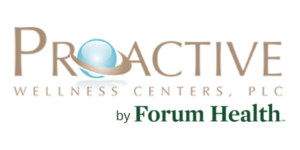Help Reverse Cognitive Decline with
Bredesen Protocol Alzheimers Treatment in Lincolnia, VA
There's no way around it: Getting diagnosed with Alzheimer's disease can be both scary and disheartening for patients and their loved ones. The cognitive impairment, memory loss, and eventual cognitive decline can seem like a grim prognosis. Unfortunately, the standard reductionist approach seeking to identify a single silver bullet cure doesn't account for the multifactorial nature of Alzheimer's disease.
That's why treating Alzheimer's disease requires a multifaceted response from functional medicine. While there is no single drug that can cure Alzheimer's, protocols addressing the nuanced factors contributing to the disease can make a difference. That's where Proactive Wellness Centers and Bredesen protocol treatment in Lincolnia, VA comes into play.
Service Areas

The Proactive Wellness Approach to Brain Health
At Proactive Wellness, we firmly believe that brain health is an essential part of your overall well-being. However, despite the emergence of new research, there has been limited understanding of how to promote brain health effectively. This includes reducing the risk of dementia/Alzheimer's and stabilizing cognitive decline in patients with early symptoms. Dr. Lawson, an esteemed Bredesen Protocol practitioner and ReCode 2.0 Certified with 17 years of experience in functional medicine can identify and address the root cause of cognitive decline in you or your loved one.
Dr. Lawson's goal isn't to replace the role of family physicians. Rather, we collaborate with primary care physicians, internists, and other medical professionals to provide a comprehensive approach to care. We believe that every individual is unique from a physiological perspective, and therefore, we avoid a one-size-fits-all approach. Instead, our programs focus on a customized approach, addressing risk factors that, if avoided or modified, could have beneficial effects for men and women who have dementia.
Our programs have a strong emphasis on slowing down and reversing the aging process, preventing diseases, and treating chronically ill patients. To achieve this, we employ a three-pronged approach:
- We empower patients with the knowledge they need to manage their health and attain optimal well-being.
- We prioritize disease prevention by conducting a thorough evaluation with the help of comprehensive diagnostics and the patient's health history form.
- We collaborate with patients to implement a rejuvenation program that includes various science-based treatments, like our Brain Health Optimization Program (BHOP) for people suffering from dementia and Alzheimer's
One of the most popular and effective programs we offer includes Bredesen protocol treatment in Lincolnia VA. This revolutionary approach to dementia has provided hope and improved cognitive function for countless people in the US. But to understand the importance of the Bredesen protocol, it's important that you first understand dementia, Alzheimer's, and its effect on people across the world.
The Wide-Reaching Effects of
Alzheimer's Disease and Dementia
There are currently more than 5.8 million individuals in the United States who are living with Alzheimer's disease. It is predicted that the number of individuals with Alzheimer's disease will more than double by 2050.
Dementia is a type of cognitive decline that affects mental abilities. There are many different causes and complex layers involved. Cognitive impairment is characterized by abnormal results on tests measuring memory, speech, critical thinking, and other cognitive abilities, but individuals with this diagnosis are still capable of performing daily activities such as bathing, dressing, and eating. Without proper treatment, Alzheimer's disease is likely to follow within a few years. Alzheimer's disease is the most prevalent form of dementia, and it is diagnosed through neuro-imaging and analysis of cerebrospinal fluid.
In the past, being diagnosed with Alzheimer's was often worse than receiving a death sentence. It was dehumanizing and stripped individuals of their memories, thinking abilities, and independence. However, after three decades of research, we now have a greater understanding of this devastating illness and even solutions like Bredesen protocol treatment in Lincolnia, VA that can help patients deal with dementia.

What Causes Dementia? 
Dementia is caused by a normal and healthy brain process that malfunctions due to a toxic environment, inflammation, and a lack of necessary nutrients and hormones. The brain's defense mechanism produces amyloid plaques, which serve as a protective helmet around the brain. Unfortunately, these plaques destroy connections between nerve cells, ultimately affecting comprehension, recollection, and clarity.

Dementia by the Numbers 
It's important to understand the impact of Alzheimer's disease (AD) around the world. According to the CDC, AD is present in 50% of patients in nursing homes and causes more than 110,000 deaths annually in the US. It was the 6th leading cause of death in 2015. More than 5 million people in the US are affected by AD, and recent data indicates that the problem is getting worse.
According to the World Health Organization (WHO), 47 million people around the world are currently living with dementia, and this number is expected to rise to 75 million by 2030 and 132 million by 2050. Alzheimer's disease is the most common form of dementia, accounting for 60 to 80 percent of all cases.
While reading those statistics can be disheartening, there's reason to be hopeful. New therapies and treatments offered at Proactive Wellness - like Bredesen protocol treatment - can help patients deal with dementia and cognitive decline.

The Power of
Bredesen Protocol Treatment in Lincolnia, VA
The Bredesen Protocol is a highly personalized treatment program that aims to reverse cognitive decline and improve brain function in patients. Dr. Bredesen has designed the protocol to be adaptable and customizable, tailored to the specific symptoms and needs of each patient.
The program is centered around lifestyle changes, medication, and nutritional adjustments, all of which are tailored to address the unique symptoms and environmental factors that may be contributing to cognitive decline. This approach, referred to as ReCODE, helps patients to combat brain fog and prevent the onset of dementia.
It has also helped patients improve cognitive function significantly, reverse symptoms, and even return to work. The ReCODE program comprises lifestyle interventions, therapeutic diets, and targeted nutrients. Proactive Wellness Centers is thrilled to offer this promising treatment modality for Alzheimer's disease to benefit our patients.
It all starts with a baseline Bredesen evaluation at our wellness clinic in Lincolnia, VA.
Baseline Bredesen Evaluation from
Proactive Wellness Centers
At Proactive Wellness Centers, we have two ways to help patients who are in search of Bredesen protocol treatment in Lincolnia, VA. The first option is our Baseline Bredesen Evaluation, which is best suited for asymptomatic patients - that is, individuals who do not exhibit any significant cognitive decline beyond what is expected with age. Dr. Bredesen classifies such patients as "PreCode."
This evaluation serves as a starting point for PreCode patients, as well as those who are unsure of their cognitive status and potential risk factors. Our baseline evaluation includes the following:
The first step involves conducting a comprehensive set of baseline labs to evaluate your overall health, closely following the Bredesen protocol. This step goes beyond standard labs that you might have for a physical. It includes tests for magnesium, zinc, and selenium levels, B6, B12, and folate levels, omega-3 and omega-6 fatty acid levels.
It also includes
- Pre-Diabetes Evaluation
- Hormone Level Evaluation
- Thyroid Level Evaluation
- Specific Immune Marker Evaluation such as TH1, TH2, IL6, and TNF.
Our goal with this assessment is to establish a starting point and compare your cognitive function against what is typical for your age group. We have chosen to use the CNS Vital Signs cognitive assessment, which is widely recognized as one of the best in the industry. Additionally, we will be conducting the standard MoCA test as part of the evaluation.
A DNA test is performed to identify the specific APOE genotype present in your DNA. APOE e4 has been shown to be associated with an increased chance of late-onset Alzheimer's disease, which occurs after a person is 65 years old.
This step covers your lab results and includes a detailed plan of action to address areas of improvement as identified in your baseline evaluation.

What are the Early Signs of
Dementia and Alzheimer's Disease?
As we grow older, it can be difficult to distinguish between normal changes in our cognitive abilities and the initial signs of dementia. The issue with preventing chronic illnesses is that we often believe we are healthy as long as we don't experience any symptoms, but this is not entirely accurate. Symptoms are typically the last indicator of a disease, meaning it has already progressed by the time they appear.
While it's always best to catch diseases before you notice symptoms, taking proactive measures at the first sign of cognitive changes can greatly impact the aging of your brain and body. It's crucial to act immediately if you're experiencing the following symptoms of Mild Cognitive Impairment. That way, ,you have a better chance of preventing the development of Alzheimer's.

Roughly 10% of individuals with MCI progress to Alzheimer's annually.
Fortunately, Bredesen protocol treatment in Lincolnia, VA may provide you with a chance to delay or even reverse these symptoms

Memory Issues
You have a hard time remembering events that happened recently, such as appointments or important conversations with loved ones. You may also have trouble remembering important information.

Language Issues
You have trouble finding relevant words when you're talking with other people. You may also have problems following along with complex or complicated discussions.

Difficulty Maintaining Concentration and Attention
You have noticed a reduced ability to focus and stay honed in on most tasks. You may also not be able to multitask effectively, and it may be harder to keep your attention for long periods of time.

Decline in Executive Functions
This symptom involves difficulty with skills like decision-making, planning, problem-solving, and organizing. These difficulties are often most apparent in day-to-day activities.

Problems with Visuospatial Awareness
You may have trouble parking your car, judging distances, reading maps, or completing tasks that necessitate spatial orientation.

Impaired Judgement and Reasoning
This may include problems when making judgments or decisions. Examples may consist of difficulties making financial decisions, managing finances, making reasonable and appropriate social decisions, or thinking through risky situations.

By contrast, some of the most common signs of normal aging can include the following
Experiencing temporary lapses in memory, where recently learned details like names or scheduled events may slip from one's mind but can be remembered later on
- You occasionally make mistakes, but nothing that stands out as significant or unusual.
- You have to ask for help putting together or setting up electronic devices or equipment.
- You sometimes forget what day it is but have the ability to remember the correct date later on.
- Your vision is getting worse, which is caused by cataracts.
- You experience shortness of breath or get tired more often when being active.
- You feel unusual aches and pains, especially during poor weather.
- You get confused sometimes but don't have an inability to make decisions or multitask.
- You have a hard time keeping your body temp regulated.
- You get angry or frustrated when tasks aren't completed in certain ways.
Your Trusted Choice for Bredesen Protocol Treatment in Lincolnia, VA
Maintaining a healthy brain is crucial for one's overall well-being, yet there remains a lack of knowledge when it comes to promoting brain health, reducing the likelihood of dementia, or managing symptoms for those exhibiting early warning signs.
That's why we're excited to offer patients the ReCODE program at Proactive Wellness Centers. Developed by Doctor Bredesen, this treatment has shown remarkable success in improving cognitive function and even reversing symptoms of Alzheimer's disease. This comprehensive program includes lifestyle changes, dietary interventions, and specialized nutrients, and we are eager to provide this promising treatment option to patients like you.
If you or a loved one are starting to show concerning signs of cognitive decline, contact our office today to learn more about Bredesen protocol therapy. It could be your first step toward reversing mental decline and enjoying life to its fullest.
Latest News in Lincolnia, VA
Investigation finds 'systemic gaps' in FCPS hiring after counselor convicted of sex crimes allowed to continue working
wusa9.comhttps://www.wusa9.com/article/news/local/fairfax/investigation-finds-systemic-gaps-fcps-hiring-after-convicted-counselor-allowed-continue-working/65-629a395b-6cb6-4b7c-afdd-40aa7a6f4d1b
Darren Thornton worked as a middle school counselor in Fairfax County despite a conviction for sex crimes against children.LINCOLNIA, Va. — Tuesday, former Fairfax County Public Schools counselor Darren Thornton was in a Chesterfield County, Virginia courtroom on charges of soliciting prostitution, the allegations that ...
Darren Thornton worked as a middle school counselor in Fairfax County despite a conviction for sex crimes against children.
LINCOLNIA, Va. — Tuesday, former Fairfax County Public Schools counselor Darren Thornton was in a Chesterfield County, Virginia courtroom on charges of soliciting prostitution, the allegations that got him fired this past summer from his job at Glasgow Middle School.
By law he should have been fired nearly two years ago when he was first charged and eventually convicted of sex crimes against children.
For that, Thornton was placed on probation. He had already passed a background check to get hired with Fairfax County Public Schools and kept working despite his conviction.
"We need to understand what happened here and why it happened," said Kathleen Brown, a FCPS parent at a Tuesday night meeting at Glasgow Middle.
At the meeting, the FCPS superintendent Dr. Michelle Reid shared with parents the results of an independent investigation into Thornton's employment.
The report found the district was never notified of Thornton's original arrest or conviction.
And also found "several systemic gaps" in the FCPS hiring process "including on reference checks, verification of the appropriate license, and information sharing between jurisdictions" among other issues the superintendent says FCPS is addressing as quickly as possible.
"One of the things that we have to do first is name that we have a concern, acknowledge that, look into it, and then follow recommendations that we know to be best practice moving forward," Dr. Reid told WUSA9. "I don't believe it's going to happen again here in Fairfax County Public Schools. And, I believe our families can trust us."
"I really think Dr. Reid is on the right path here. But I think we have to persist," said Brown echoing the concerns of some other parents at the meeting.
"To blithely say, 'No, this is not happening, it's not going to happen again here,' is very naïve," said Brown. "We have got to realize we've got all sorts of concerns about our kids and I think they're valid concerns."
One change Dr. Reid said she wants is regular background checks of current staff, after they are hired. But, she says she needs the commonwealth's help to make that feasible by enrolling in a FBI program called Rap Back.
The superintendent also says she has already taken disciplinary action on school employees and more could be coming but she won't say who or what it was.
'There was a car in our front yard' | Homeowner calls for lower speed limit after a string of crashes on Lincolnia Road
Evan Koslofhttps://www.wusa9.com/article/news/local/virginia/there-was-a-car-in-our-front-yard-homeowner-calls-for-lower-speed-limit-after-a-string-of-crashes-on-lincolnia-road-alexandria-northern-virginia/65-c4d88f48-4c15-468a-8ab3-7b6b26af881d
Debi Gerald, who lives along Lincolnia Road, said that they've tracked 15 crashes on a small stretch of Lincolnia Road so far in 2023.More VideosALEXANDRIA, Va. — On her front lawn in the Alexandria area, Debi Gerald looked through a photo album. This album is not filled with childhood memories or family portraits. Every page is full of ...
Debi Gerald, who lives along Lincolnia Road, said that they've tracked 15 crashes on a small stretch of Lincolnia Road so far in 2023.
More Videos
ALEXANDRIA, Va. — On her front lawn in the Alexandria area, Debi Gerald looked through a photo album. This album is not filled with childhood memories or family portraits. Every page is full of crash photos.
"Our mailbox down at that point," she laughed, pointing at one of the pages.
Gerald lives in a home along Lincolnia Road, nestled in between Columbia Pike and Little River Turnpike. She said this stretch, which many drivers use as a cut-between, has become a hotspot for crashes.
“Cars have been running off the road for as long as I can remember,” she said.
Along with her mother, Gerald started tracking every crash in a spreadsheet last year. In 2022, the duo documented 27 crashes, and so far in 2023, they've counted 15.
With each incident, Gerald jots down the date in one cell and notes in the other, using sentences like "car into ditch" or 'two signs hit.' On June 24, 2023, she jotted down an especially dramatic note.
"Three car accident at Lincolnia Rd. and Sano St. One car ended up in our yard. That driver was taken to the hospital for pain due to airbag deployment."
Gerald said that this crash could have been a lot worse.
"We woke up to a loud noise," she said. "And there was a car in our front yard. That easily could have happened when my 84-year-old mother was out cutting the grass in the front yard.”
Gerald is uniquely suited for this project.
Her late-brother, Wes Gerald, was a fire dispatcher for Fairfax County, and had a passion for fire photography. When he passed away, Debi took up the camera, to honor his memory, as documented by WUSA9 in 2019.
"There's probably not a day that goes by when I don't think about my brother," she said in 2019. "But this does help. Knowing that it meant so much to him. Now it means this much for me as well."
Due to this background, Gerald is used to having the scanner blaring at all hours. When a crash happens nearby, she is able to respond quickly to snap a photo.
Gerald has brought this data to the Virginia Department of Transportation, urging them to lower the speed limit. However, VDOT has so far turned down this request, as explained in a statement to WUSA9:
"VDOT was contacted by Supervisor Gross’s office regarding an inquiry into changing the speed limit on Lincolnia Rd. A speed limit study was conducted for Lincolnia Rd. between Barnum Lane and Columbia Pike and based on the findings of the study, the recommendation was to maintain the speed limit of 35 mph."
"VDOT adheres to specific policies along with the Code of Virginia to ultimately determine if a speed limit study is required and a change is necessary. Not only is crash and speed data considered, by also such things as pedestrian activity, roadway context, and driveway density are included in the study. Once a speed study is completed, a decision can be made in coordination with the district traffic engineer, district traffic operations director, and finally the state traffic engineer to implement the change, if necessary."
Despite VDOT's response, Gerald said that she'd keep fighting for changes on Lincolnia Road.
"We are concerned about our neighbors," she said. "We’re concerned about the amount of damage done to cars.”
Neighborhood Spotlight: Parklawn
Annandale Todayhttps://annandaletoday.com/neighborhood-spotlight-parklawn/
Like so many other subdivisions in the Annandale/Mason area, Parklawn was built on farmland to meet the needs of population growth following World War II.The neighborhood, generally between Columbia Pike, Holmes Run Stream Valley, and Lincolnia Road, was built in 1955 on what had been the Clark family’s dairy farm.The Clark House was moved from its ...
Like so many other subdivisions in the Annandale/Mason area, Parklawn was built on farmland to meet the needs of population growth following World War II.
The neighborhood, generally between Columbia Pike, Holmes Run Stream Valley, and Lincolnia Road, was built in 1955 on what had been the Clark family’s dairy farm.
The Clark House was moved from its original location in the 1980s to make way for the development of the Bancroft Mews townhouses. It was restored and now sits on a hill overlooking Columbia Pike and the Barcroft Plaza shopping center. There’s another smaller house owned by the Clark family on Braddock Road in Parklawn.
The original community had 625 houses, says Richard Zambito, president of the Parklawn Civic Association, but has grown as about 10 smaller neighborhoods were annexed over the years.
Most of the houses are basic ramblers, although there are a few split levels. The original houses are either 1,200 square feet one-story homes built on a slab or two-story 2,400 square feet houses, Zambito says. Most have had additions built over the years, and some have been totally transformed.
Home prices vary widely, from the low-$400,000s to close to $700,000 depending on size and the extent of improvements.
Few houses are on the market, however. “No one builds one-story homes anymore, so these homes are popular and sell quickly,” says Zambito, noting they attract empty nesters, retirees, and young families who’ve been priced out of Arlington.
Nearly all the streets are named for national parks, such as Yellowstone, Everglades, Teton, and Bryce. There’s an Arcadia Road, which is probably a misspelling of Acadia, a park in Maine.
There are so many trees, “some streets really do feel like a park,” Zambito says. Parklawn is bordered by Holmes Run Valley Stream Park, which has a nature trail and a new pedestrian bridge.
Other assets, cited by Zambito, include the Parklawn Pool, Glasgow Park, the baseball fields at Parklawn Elementary School, the wide diversity in ages and cultures among the residents, and the many sidewalks. Other than Braddock Road, there aren’t any cut-through streets, making Parklawn “somewhat secluded and insulated from the chaos of Columbia Pike and Lincolnia Road,” he says.
“People know each other here. That’s one of the really nice things,” he says. “On some levels it’s like a big second family.”
At one time, the civic association and the Parklawn Recreation Association, which oversees the pool, had been combined but split up in the 1980s or 1990s, according to neighborhood lore, as residents sparred over the building of tennis courts. The civic association eventually dissolved, and the tennis courts, which had been poorly maintained, were demolished about five years ago.
Resident Mollie Loeffler revised the Parklawn Civic Association at about that time, with help from lots of volunteers, including Dave Galway. The group received several Fairfax County Neighborhood Enhancement Partnership Program grants for projects to clean up and improve Glasgow Park and add landscaping and signs at the neighborhood entrances.
The civic association also hosted several events to bring the community together, including the Spooky 5K, potluck dinners, National Night Out gatherings, and a house tour.
Parklawn is dealing with some of the same challenges facing other neighborhoods in Mason District, including an increase in rental properties, a decline in property maintenance, residents’ failure to pick up litter, and the difficulty getting people to volunteer for community projects.
A couple of recent land use issues have gotten the neighborhood’s attention in a big way, however. Plans in 2012 for a cell tower on property owned by the Parklawn Recreation Association sharply divided the community. Some residents argued that the pool needed the revenue from the cell tower while those opposed complained it would be an eyesore that would bring down property values.
The issue was finally resolved in May 2014, when a state appeals court affirmed a decision against the tower by the Fairfax County Board of Zoning Appeals. “People put that conflict behind them,” Zambito says, noting that pool membership is up and, barring any new problems, “the pool will survive.”
Last fall, many Parklawn residents strongly opposed the Commonwealth of Virginia’s plans for a Department of Motor Vehicles customer center in the Barcroft Shopping Center. Local members of the General Assembly ultimately persuaded the DMV not to relocate.
That was a great victory for the neighborhood, not only because the DMV would have created traffic and parking problems, but because it might have caused Harris Teeter to move away, Zambito says. Many residents see that store as not only a shopping destination, but a good place to meet your neighbors.
Parklawn Snapshot
Location: Mason District, east of Columbia Pike, with an Alexandria postal address.
Schools: Parklawn Elementary School, Glasgow Middle School, Stuart High School.
Recreation: Parklawn Pool, Glasgow Park, Holmes Run Stream Valley, Mason District Park.
Home prices: $430,000 and up.
They built the road they would be forced to walk: a brief history of Little River Turnpike
Annandale Todayhttps://annandaletoday.com/they-built-road-they-would-be-forced-to/
By James Albright, from the Living Life in 4D blogFrom my front porch, looking over my garden, I can see the two blocks to the intersection of my street with the Little River Turnpike here in Lincolnia. I typically walk there once a day or so on my way to the local coffee shop or to Green Spring Gardens, a stunning horticultural center that reminds me of why I live here in Fairfax County. All in all, it is an idyllic life – early 21st century troubles notwithstanding....
By James Albright, from the Living Life in 4D blog
From my front porch, looking over my garden, I can see the two blocks to the intersection of my street with the Little River Turnpike here in Lincolnia. I typically walk there once a day or so on my way to the local coffee shop or to Green Spring Gardens, a stunning horticultural center that reminds me of why I live here in Fairfax County. All in all, it is an idyllic life – early 21st century troubles notwithstanding.
Little River Turnpike carries its history in its name. It was the turnpike – the toll road – that led to the Little River, some 34 miles to the west. One of the first-ever roads constructed in this country, it stretched from Alexandria through farm and field countryside. Today it has many names along the way, but right here in Annandale, it is still called the Little River Turnpike.
Although its six-lanes are not often loved, its history is indelibly connected to the counties it passes through. But that history – of sleepy farmers on slow carts, bearing their produce to the wharves of Alexandria – is really just one side, one happy side, of the road’s past.
The rest of its history is something that I suspect few in my area know about. For the Little River Turnpike is a road built by enslaved Americans that served, eventually, as the path their children and their children’s children, would take when shackled at the feet, they were marched away from their homes to the Deep South.
When I look up the street to the Turnpike, I see only cars racing by on their way to Alexandria, about four miles to the east. Like so many roads, we don’t see really see it. We see cars, bicycles, stoplights, street signs, storefronts, but we don’t see what went into the making of the road – why it went here, who did the work, and what happened to them.
The Turnpike was an incredible challenge – the structure of the road itself was very modern, very expensive, and very arduous. Since this was early 19th century Virginia, the builders turned to the labor market they were comfortable exploiting: enslaved Americans who were to be rented under contract.
Twenty men were retained to do the work of the overseers over the next few years. The proceeds of the work did not go to those who did the actual work; no, that money went to those who enslaved them. Although we have never really listened to their voices, the workers clearly spoke – a number ran away from the job, a number large enough that they had to find another group to keep the work going.
In my mind’s eye, I can see the men clearing fences and trees out of the way, shoveling the soil to build the mounded center of the roadway and then sloping it away from the crown. Stones had to be lain just so, so water would drain; ditches would need to be dug to carry water away. The road had to be dry – or at least mostly dry – so that the mud that bedeviled so much cartage and horses in that day wouldn’t impede travel and justify the 10-cent tolls.
| A coffle of slaves being marched from Virginia west into Tennessee, c. 1850. [Abby Aldrich Rockefeller Folk Art Museum, Colonial Williamsburg Foundation] |
The climate in Virginia can be terribly hot or numbingly cold – there is no doubt in my mind that the overseers would not care too much about the comfort of their workers. The task at hand had to be completed.
It took eight years of hard work until December 1811 when the final pieces were put in place. From that point, the road became a major thoroughfare, one so popular that towns sprang up along its path and shaped the infrastructure that underpins Northern Virginia.
One can look at a map of the whole area and still trace the straight line that was the Little River Turnpike, now routes 236 and 50, from the city to the hills. The road became the backbone of transportation from the Piedmont and the Shenandoah Valley to the waterfront of Alexandria.
Because the road was so efficient a mover of produce and carts, it also served to move men, women, and children from what was called the Tidewater all the way to Louisiana and Mississippi.
Once the nation had restricted the “slave trade” – the seizure of humans from Ghana, Senegal, Biafra, Congo, Angola, and other places – and the nature of agriculture in the young country had shifted from tobacco in the mid-Atlantic to cotton in the Deep South, the demands of labor also shifted.
White landowners in Maryland, Virginia, and the Carolinas found a new way to profit – many had their enslaved workers sold to cotton slave camps in the south. Families were broken up, children separated from adults, communities shattered as merchants of the enslaved found what is now called the “domestic trade” to be a profitable exercise.
In Alexandria, prisons full of these men and women were used to house them while sales could take place. These prisons still stand along Duke Street in Alexandria. From these prisons, the enslaved were either sent by boat to New Orleans or shackled together in “coffles” and walked overland to Louisiana.
To describe the experience of the coffles would be impossible without falling prey to minimizing the horror. For our discussion, however, it is the passage itself that concerns. For those prisons sent the enslaved in coffles to trudge down Duke Street – the starting point of the Little River Turnpike. From the prisons, the coffled men and women would ascend towards Shuters Hill and the Turnpike. The last stop: New Orleans.
Bound together, moving slowly, the groups of enslaved would probably manage about 20 miles a day. If they left early in the morning, they would be reaching the outskirts of Green Springs Farm in Lincolnia (then Uniontown) probably mid-morning. Coming up the Little River Turnpike where it crests the hill after Turkeycock Run, they would walk along the field of the large farm, the promise of water from its fresh spring perhaps used to entice them to quicken their pace.
If one of those walking in shackles looked to the left, they would see fields of corn and maybe a small orchard, looking right at the place my house would be built in another hundred years. They might see other enslaved Americans working in those fields, fields that were now poor after long periods of cultivation, workers straining in the sun. They might have looked at each other – both enslaved in the only land they had known right there where Cherokee Avenue meets Little River Turnpike, where a dentist and a daycare center now watch the car dealer across the street. They might have wondered what would become of the other?
And like that, they would part, one to his plow the other to the stony path ahead of him. At some point in those years, the continuous passage of these thousands of enslaved men and women trafficked to the South, would get less attention. Maybe the workers in the fields wouldn’t even look up much anymore – just another group moving past, like so many before. Or maybe they would be glad that they were not being torn from their families, their children.
I think about this a lot as I walk along Little River Turnpike, nearly 200 years after that time. Only a little of that time remains – the beautiful house of Green Springs that was there before the Turnpike was built now hidden behind the car dealer, the streams that still flow to this day at the foot of the hill, the hills themselves that posed a serious challenge to the builders. Even those people who worked in the fields, they remain. For their descendants surely settled in this area after the Civil War was fought for them. Lincolnia, just down the way on Little River Turnpike, was primarily a Black American community, with a school, stores, churches, and cemetery.
The decimation of the American community brought on by the domestic trade of the enslaved remains a central character in the nature of our country. So, in a way, the story of the road that edges my neighborhood is both a story of the past and a story of the future.
Much of the factual basis for this post (but not the opinions) comes from an article from 2017 by Debbie Robison in local history blog, Northern Virginia Notes, an article by the renowned historian Edward Ball, “The Slavery Trail of Tears” in Smithsonian, and Edward Baptiste‘s The Half Has Never Been Told: Slavery and the Making of American Capitalism.
When To Trick Or Treat In Fairfax County; Trunk-Or-Treat Events For Kids
Emily Leaymanhttps://patch.com/virginia/greateralexandria/when-trick-or-treat-fairfax-county-2022-trunk-or-treat-events
FAIRFAX COUNTY, VA — It's that time of year when children will show up at doorsteps, hoping to wow residents with their costumes in exchange for candy. In Fairfax County, trick-or-treat is expected on Monday, Oct. 31.Fairfax County government does not set a specific date for trick-or-treat, so it is expected to happen the evening of Oct. 31. Some homeowners associations or apartment complexes may set different times for trick-or-treat.To prepare for trick-or-treat, Fairfax County offers the following safety tips:...
FAIRFAX COUNTY, VA — It's that time of year when children will show up at doorsteps, hoping to wow residents with their costumes in exchange for candy. In Fairfax County, trick-or-treat is expected on Monday, Oct. 31.
Fairfax County government does not set a specific date for trick-or-treat, so it is expected to happen the evening of Oct. 31. Some homeowners associations or apartment complexes may set different times for trick-or-treat.
To prepare for trick-or-treat, Fairfax County offers the following safety tips:
Trunk-or-Treat/Trick-Or-Treat Events
Here are some upcoming trunk-or-treat and trick-or-treat events around Fairfax County. If you would like to share an event, email emily.leayman@patch.com. You can also add events to your local Patch calendar.
Find out what's happening in Greater Alexandriawith free, real-time updates from Patch.
Trunk or Treat: Friday, Oct. 21, 6 p.m. to 8 p.m.
Trunk or Treat: Saturday, Oct. 22, 4 p.m.
Trunk or Treat: Saturday, Oct. 22, 3 p.m.
Trunk or Treat: Saturday, Oct. 22, 6 p.m. to 8 p.m.
Trunk or Treat at Franconia United Methodist Church: Saturday, Oct. 22, 4 p.m. to 6 p.m.
Trunk or Treat: Sunday, Oct. 23, 2 p.m. to 3:30 p.m.
Trunk or Treat: Tuesday, Oct. 25, 6 p.m. to 8 p.m.
Trunk or Treat: Wednesday, Oct. 26, 5:30 p.m. to 6:45 p.m.
Trick or Treating at Mount Vernon: Saturday, Oct. 29
Trunk or Treat & Chili Cook-Off: Saturday, Oct. 29, 2 p.m. to 5 p.m.
Trunk or Treat: Saturday, Oct. 29, 3 p.m.
Trunk-or-Treat Halloween Party: Saturday, Oct. 29, 10 a.m.
Trunk or Treat: Saturday, Oct. 29, 4 p.m. to 7 p.m.
Fall Festival/Trunk or Treat: Saturday, Oct. 29, 10 a.m. to 2 p.m.
Trunk or Treat: Saturday, Oct. 29, 1 p.m. to 3 p.m.
Trunk or Treat: Saturday, Oct. 29, 4 p.m. to 6 p.m.
Old Firehouse Festival of Frights and Trunk or Treat: Saturday, Oct. 29, 5 p.m. to 10 p.m.
Trunk or Treat: Sunday, Oct. 30, 5 p.m. to 8 p.m.
Trunk or Treat: Sunday, Oct. 30, 6 p.m. to 7:30 p.m.
Trunk or Treat: Sunday, Oct. 30, 3 p.m. to 5 p.m.
Mount Vernon Presbyterian Church Trunk or Treat: Sunday, Oct. 30, 12 p.m. to 2 p.m.
School of Music Trunk or Treat: Monday, Oct. 31
Trunk or Treat: Monday, Oct. 31, 6 p.m. to 8 p.m.
Disclaimer:


 (703) 822-5003
(703) 822-5003 Book An
Appointment
Book An
Appointment